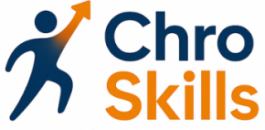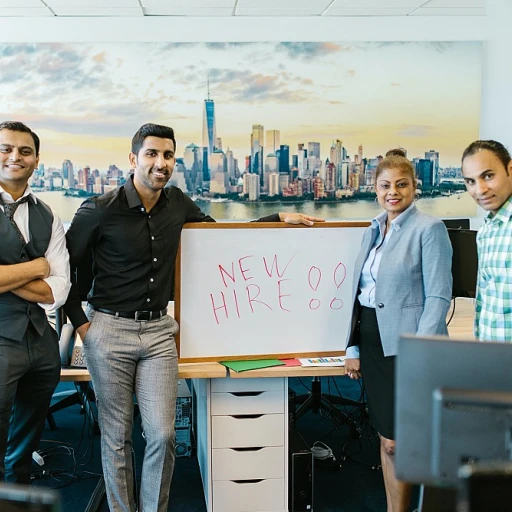
Understanding the Role of a CHRO
The Strategic Function of a CHRO
The Chief Human Resources Officer (CHRO) plays a pivotal role in shaping the strategic direction of an organization's human capital. As leaders, CHROs must not only possess robust leadership skills but also have a keen understanding of the organization's overarching goals. This encompasses a broad spectrum of responsibilities, from enhancing team performance to fostering an inclusive work environment.
The CHRO is responsible for aligning the human resources strategy with the company's vision, thus ensuring that all HR initiatives support long-term objectives. This alignment is crucial as it directly impacts employee engagement, productivity, and ultimately, company performance.
Balancing Operational and Strategic Duties
CHROs need to juggle between operational tasks and strategic planning. Leadership development, emotional intelligence, and decision making are core competencies required for this role. By focusing on specific, measurable, achievable, relevant, and time-bound (SMART) goals, CHROs can set a clear direction for their team's development and their own leadership aspirations.
Additionally, a good CHRO understands the importance of time management and resource allocation to meet set goals within an optimal timeframe. This involves setting achievable goals for both short-term and long-term development across various HR functions.
Key Leadership Skills for CHROs
Developing Core Competencies as a CHRO
As an aspiring Chief Human Resources Officer (CHRO), one must hone a variety of essential leadership skills to navigate the complex dynamics of human resource management. Attaining expertise in these areas will substantially enhance one's ability to lead effectively and set a robust foundation for pursuing specific leadership development goals. Here are some key competencies essential for CHROs:- Emotional Intelligence: Effective CHROs must demonstrate a high level of emotional intelligence, which is crucial in understanding and managing their own emotions, as well as those of the team members. This skill plays a pivotal role in fostering a positive work environment and facilitating strong team dynamics.
- Decision Making: CHROs are often in positions that require quick yet informed decision making. This involves evaluating multiple perspectives, considering long-term impacts, and making choices that are aligned with organizational goals.
- Strategic Thinking: Being able to link human resource strategies with overall business objectives ensures that HR initiatives are both relevant and impactful. This skill aids in setting SMART goals - ones that are Specific, Measurable, Achievable, Relevant, and Time bound.
- Effective Communication: Clear communication helps in conveying goals, expectations, and feedback to team members effectively. It's an essential trait that leaders must develop to ensure alignment on objectives and to inspire the team.
- Performance Management: CHROs need to master the art of evaluating employee performance to promote growth and development. It involves setting achievable goals, providing regular feedback, and working with team members to improve their performance over time.
- Leadership Development: Investing time in leadership development enables a CHRO to nurture potential leaders within their team. This ensures a sustainable succession strategy and reinforces a strong leadership culture within the organization.
Setting Effective Leadership Goals
Crafting Attainable CHRO Leadership Objectives
Setting effective leadership goals involves aligning personal and professional development with the strategic objectives of the organization. The application of SMART goals can significantly enhance this process. Specific, Measurable, Achievable, Relevant, and Time-Bound (SMART) criteria help leaders create clear and attainable objectives, fostering growth and improvement in various areas of leadership. Taking the time to craft these objectives ensures that each goal is actionable and aligns with broader organizational priorities. For example, enhancing decision making skills, increasing emotional intelligence, or improving team management can become specific objectives that reflect an individual's leadership development. Here are some tips for setting effective leadership goals:- Be specific: Clearly define what you want to achieve. Specify the skills or areas that need improvement, such as decision making or emotional intelligence, to focus your efforts.
- Ensure measurability: Determine how you will measure success. Whether through performance reviews or feedback from team members, having metrics allows you to track progress effectively.
- Set achievable objectives: Establish realistic goals that consider current resources and constraints. Avoid setting goals that are too ambitious, which could lead to frustration.
- Focus on relevance: Align your goals with both personal aspirations and organizational needs. This relevance motivates and ensures that your efforts contribute to the overall development of the team.
- Time-bound: Set deadlines to maintain momentum. Whether the goal spans across three months or a longer term, a specified timeframe enhances commitment and focus.
Examples of Leadership Goals for CHROs
Crafting Leadership Goals for Success
Setting leadership goals is a crucial step for aspiring Chief Human Resources Officers (CHROs) aiming to excel in their roles. These goals not only guide personal development but also enhance team performance and organizational success. Here are some examples of leadership goals that can help CHROs thrive in their positions.
Enhancing Emotional Intelligence
Emotional intelligence is vital for effective leadership. A CHRO should aim to improve their ability to understand and manage their own emotions, as well as those of their team members. This goal can be achieved through regular feedback sessions and emotional intelligence workshops. By focusing on this area, leaders can create a more supportive and productive work environment.
Improving Decision-Making Skills
Decision-making is at the core of a CHRO's responsibilities. Setting a goal to refine this skill can involve participating in decision-making simulations or seeking mentorship from experienced leaders. This development goal will not only benefit the CHRO but also the organization by ensuring more informed and strategic decisions.
Fostering Leadership Development
Encouraging leadership development within the team is essential. A CHRO can set a goal to implement a leadership development program that identifies and nurtures potential leaders within the organization. This goal is both relevant and achievable, as it aligns with long-term organizational growth and sustainability.
Implementing SMART Goals
Utilizing the SMART criteria—Specific, Measurable, Achievable, Relevant, and Time-bound—can help in setting clear and attainable goals. For example, a CHRO might set a SMART goal to reduce employee turnover by 10% within three months by enhancing the onboarding process and employee engagement initiatives. This approach ensures that goals are not only well-defined but also trackable over time.
Enhancing Time Management
Effective time management is crucial for balancing the numerous responsibilities of a CHRO. Setting a goal to improve time management skills can involve using tools and techniques to prioritize tasks and delegate effectively. This goal helps in maintaining a high level of performance and meeting organizational objectives efficiently.
By setting these leadership goals, CHROs can not only improve their own skills but also contribute significantly to the development and success of their teams and organizations. These goals serve as a roadmap for personal and professional growth, ensuring that CHROs are well-equipped to handle the challenges of their roles.
Measuring Success in Leadership Goals
Tracking and Evaluating Leadership Goals Progress
In the pursuit of becoming an effective CHRO, setting precise leadership goals forms only a part of the blueprint for success. Measuring the progress and results of these goals is equally essential for leadership development. Achieving this involves a strategic approach to ensure growth is not only intended but realized over time. A CHRO must rely on SMART goals – specific, measurable, achievable, relevant, and time-bound. Such goals offer clear definitions and yardsticks, making it possible to appraise progress accurately. For example, denoting a measurable aspect like enhancing team performance through targeted initiatives, provides concrete metrics for assessment. How to Measure Success:- Utilize Metrics and KPIs: Establish key performance indicators (KPIs) that reflect the leadership aspirations, such as team development criteria or decision-making enhancements. Accurate measures could illustrate achievements or identify areas needing improvement.
- Regular Feedback Loops: Schedule periodic reviews, perhaps every three months, to gather feedback from team members. This helps in gauging whether the leadership strategies deployed are resonating positively within the work environment.
- Assessment Tools: Deploy tools that facilitate the tracking of leadership development over time. Tools that estimate emotional intelligence growth or improvements in time management can provide a vantage point to assess progress.
- Self-Reflection: Encourage regular self-reflection to reflect on personal and professional strides made. This introspective approach fosters a perpetual growth mindset that is crucial for long-term management excellence.
- Adjust Goals When Necessary: As market dynamics and organizational structures evolve, flexibility in goal setting is paramount. Adaptation of the goals ensures relevance and alignment with the overarching objectives of the organization.













